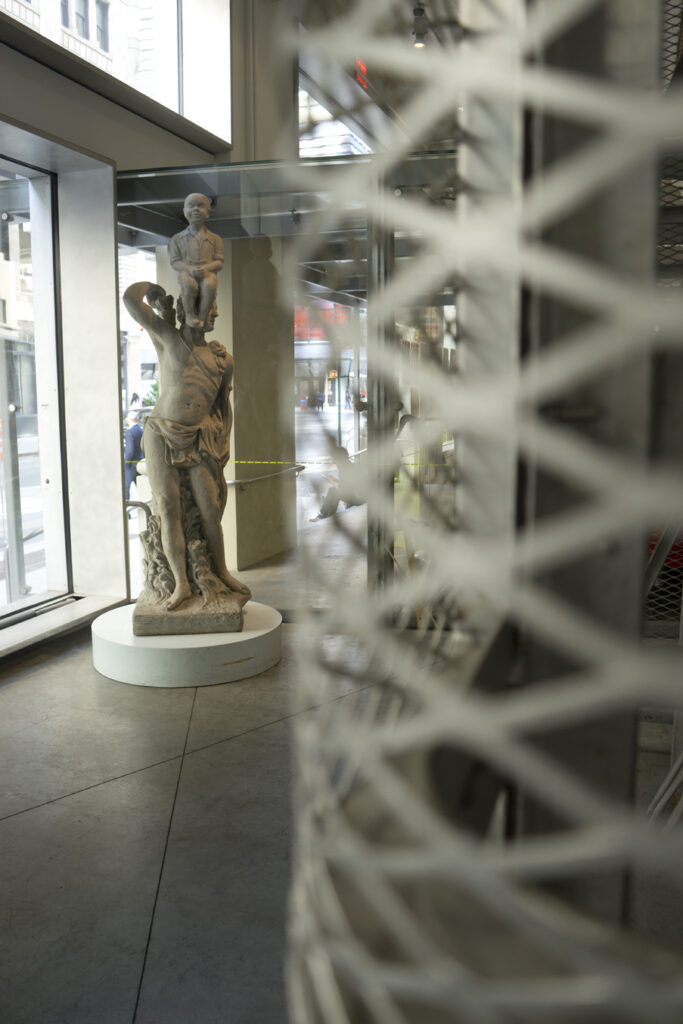
As if to add insult to Ad Reinhardt’s injurious quip that “Sculpture is something you bump into when you back up to look at a painting,” Fred Wilson’s Untitled (Pride & Prejudice) is denied even the possibility of a bump, much less being seen by most of the people who pass through Parsons’ 2 W. 13th Street lobby. Wedged into a corner behind a security desk and at the back of an elevator cage, Wilson’s sculpture seems covered by the same cloak of invisibility that keeps issues of race under wraps in politics today—race being the real reason for the intransigence of the right under Obama.
However, in spite of its location and the implications of self-effacement, Untitled (Pride & Prejudice) is a strong piece of politics, though not without its subtleties. Wilson takes two tropes—an adult figure, modeled after a mash-up of classical Apollo’s, and a figure of shoeless farm boy a la Norman Rockwell—and combines them in one genre, what we might call the aesthetic subspecies of mass-produced lawn ornaments.
This is a very different kind of holy trinity: a triad class relations. There’s the bourgeois suburban sculpture, the lower class child, and upper class(ical) man. The piece’s subtitle, Pride & Prejudice—a pun on Jane Austen’s novel of manners—seems to supports this reading. But only at the expense of the obvious double entendre of “prejudice.” Clearly, the man is white and the child is black and they’ve been joined (actually glued) together to provoke a cognitive dissonance between form and content, between style and meaning.
And yet, the nondescript—again, almost invisible—gray of the concrete almost mutes the incongruity of the two figures. They seem of a piece, but it’s a nasty piece of American culture. One in which African-Americans are egregiously infantilized. This is an unbalanced relationship cast in cement.
Unbalanced, yes but perhaps not in the most obvious way. Might the hierarchy of race relations have been inverted and subverted here after all? It might if we take a page from the Lives of the Saints, or rather, discredited saints—namely the de-sanctified St. Christopher. Christopher (who lost his place on the Catholic calendar in 1969) is always portrayed carrying the Christ Child on his shoulder. Nonetheless his image and his medals were such a part of a Catholic childhood that I can’t help but see him here.
Legend has it that a child asked Christopher to ferry him across a river, and over the course of the journey the child became extraordinarily heavy. It seems Christopher not only had the weight of the world on his shoulders “but also Him who made it.” Wilson’s child then is as much if not more a god than the Apollonian Christopher who holds him up high.
Is Untitled (Pride & Prejudice) reflective of race/class relations at The New School?
Is Untitled (Pride & Prejudice) reflective of race/class relations in the place you come from?
Have you ever “bumped into” Untitled (Pride & Prejudice) before?
Susan Yelavich
Faculty, Parsons The New School for Design

